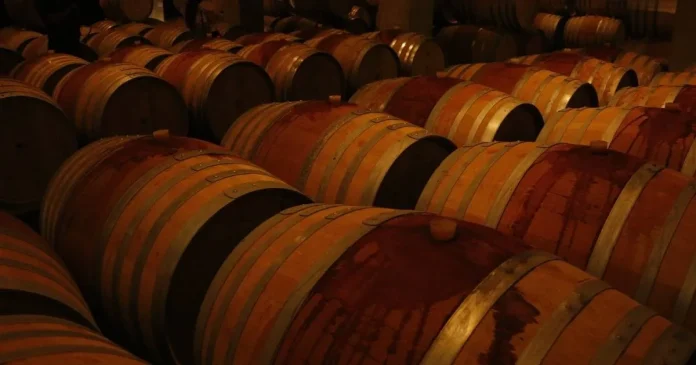Which country is the best for wine-tasting, what’s the most unexpected place to grow and try wine, and where are some cool places to go in Europe, the US and beyond for wine lovers? We answer these questions and more
The variety and quality of wine on sale in the supermarket these days is increasing, and the rise and ease of international trade means that countries or regions that had lain hidden are now being discovered. Heard about through the grapevine, if you will. Here, we don’t necessarily look at the most famous wine destinations, but those which are underrated or lesser-known.
Uruguay
South America has been known for the quality of its wine for some decades now, but most people will only be familiar with varieties from Argentina or Chile. And that’s a good thing; rich reds and crisp, vivacious whites are what they’re about. More interestingly though, Uruguay has a grape variety known as Tannat, which has taken the position of “national grape”. Native to southwestern France and imported when European settlers arrived, it produces a smoky, almost spicy wine that is often blended with Cabernet to make it less aggressive. Uruguayans, however, are very proud of their love affair with this relatively rare grape.
Maharashtra, India
India? Really? Well, yes. Odd though it may seem, the region around the ancient city of Nashik is known as “The Wine Capital of India”, having 22 wineries — around half of the country’s total — and is home to a number of fall wine festivals. The story begins very recently. In 1996, Silicon Valley employee Rajeev Samant quit his job and, taking a Californian wine-maker with him (willingly, one presumes), repurposed his family’s land in the region. The potential he saw in the area was realized, and now the Sula vineyards are the daddy of them all. Due to the high altitude at which the grapes are grown, the wines can be quite acidic, but the Sula sun-design label is becoming more and more recognized throughout the world.
Bulgaria
There is evidence that wine-making has been going on in the Thracian lowlands (on the Greek border, along the banks of the Maritsa river) for 7,000 years. Members of the Cult of Dionysus were all about the wine, and production has continued — albeit in a less cultish manner — to today. A 1960 decree actually divided Bulgaria into five distinct regions which, due to the country’s location, meant that a number of different styles of grapes could be cultivated. From the long, gentle falls near the coast of the Black Sea, to the Mediterranean climate of the Struma Valley region in the southwest of the country, it’s ripe for growing any number of grape varieties, including the very local Misket Cherven, a pinkish-red grape that produces a dry, slightly green-tinted white wine.
Croatia
The beautiful island of Krk off the northern coast of Croatia is home to the only place in the world that produces Vrbnička žlahtina wine; it’s a light, fresh white that goes extremely well with sheep’s cheese, another Croatian delight. Pliny the Elder wrote in the first century CE that the wines of Krk were the best in the entire Roman Empire for medicinal purposes, and the island was for centuries a preserve not only of exclusive wines, but also of the last vestiges of the Venetian and Dalmatian languages.
As to the rest of the country, the north and the interior running between Hungary and Bosnia to the Serbian border, specializes in fruity white wines, while the further south you head along the coast, the vineyards give way to those producing heavy reds. Due to the extremely rugged growing conditions of much of the country, there are a number of varieties that can only be found in Croatia, including Plavac Mali — a small, blueish grape that can produce wines of up to 17% alcohol.
Canary Islands, Spain
We’re visiting another outlier next, as the Spanish-owned archipelago, located around 60km from the Moroccan coast, has been known as a producer of fine wines for centuries. Indeed, Shakespeare’s Mistress Quickly could joke that “you have drunk too much canaries” and the audience would have known that this referenced a very expensive wine reserved for the upper classes. Thomas Jefferson, after retiring to Monticello, ordered Canary wine for entertaining, contemporary records believing it to be “the richest, the most firm, the best bodied and most lastingest wine”.
Today, you can tour the vineyards of the Canaries and see vines being grown in a surreal, almost lunar landscape of black volcanic rock. Planted in ash and often concealed in natural craters to protect them from the harsh Atlantic winds, the high tannic qualities of a lot of the wines mean they’re not necessarily immediately welcoming, but are a wonderful discovery all the same.
Lebanon
A wine-producing region since around 2,000 years before Alexander the Great, Lebanese vintners nowadays work mainly with French grapes, with Cabernet Sauvignon and Merlot being among the favorites. There are indigenous varieties on top of these — Musar being one — and wineries such as Ixsir have overcome the challenges of growing grapes in the country’s mountainous regions (at heights of over a kilometer above sea level) with aplomb. In fact, the company was presented with 2009’s Revelation award at Bordeaux’s annual Semaine des Primeurs event, a world-renowned wine tasting and evaluation expo. The Bekaa Valley is becoming known for its reds and dry rosés as the Lebanese industry goes from strength to strength, with over 7 million bottles now produced every year.
Canada
German ingenuity gives Ontario’s vintners their magic trick — using the low temperatures to their advantage to produce “ice wine”. Germany has been doing it since the 1700s, but since the late 1970s, Canada has taken over the mantle of large-scale cultivation and production. The technique is this: if you harvest grapes that are completely frozen, the small amount of liquid that you manage to extract means that the wine will be very sweet indeed, and so it proves with these Canadian dessert wines, so be prepared. Also, production costs for ice wine are relatively high (for example presses need to be strengthened to crush the thousands of frozen grapes), and because only around 20% of the juice can be used due to it being so sweet, bottles are usually smaller.
Because of all this, a good bottle of Canadian ice wine can set you back between 30 and 50 dollars. There is such a thing as “iced wine”, but that extra D is a giveaway. If the grapes are frozen in industrial quantities indoors, say, the product legally has to be called “iced”, not “ice” and is, therefore, cheaper and of lower quality. Since the early part of the 21st century, Canada has been the world’s leading producer of real ice wine. So now you know.
Texas, US
It’s probably not the image you have of the Lone Star State — a rugged cowboy sipping on a nice glass of Chenin Blanc after a hard day’s cattle-bothering, but the Texas Hill Country Wineries are becoming — after California’s Napa Valley — the most visited area of vineyards in the US. Over 5 million people every year trek up into the limestone hills to the west of Austin, where the warm climate makes for perfect cultivation of Mediterranean grapes such as Tempranillo and Malbec. Texas also has a very important claim to wine-based fame, as it was here in the 19th century that Thomas Volney Munson discovered what would become the cure for the phylloxera epidemic that nearly wiped out a large chunk of the European wine industry, notably in France.
The problem could be solved by grafting American rootstock (that was phylloxera-resistant) to European vines. Many French vintners were appalled at the idea, but were eventually left with little choice. European vineyards slowly recovered and are in fine fettle today, while Munson was awarded the Order of Agricultural Merit by the French government. The town in which he lived — Denison, Texas — was later twinned with the French town of Cognac. Thanks, Texas.
Slovenia
@kiwi.com Replying to @Georgia K Ready to travel to Slovenia in October? Follow @ad.molota ‘s tips #slovenia #sloveniatiktok #sloveniatravel #visitslovenia #exploreslovenia #feelslovenia #travelcheap #travelforfree #wehacktravel #wehackthesystem #kiwicomtravel ♬ Trap, hip hop, dark beat ♪(963369) – Ninja_Muzik_Tokyo
Producing around 27 million gallons of wine a year, only 10 percent of which gets exported, means that Slovenians a) clearly know what they’re doing, and b) don’t want the rest of the world to realize. With a total area of only 7,800 square miles, but with 14 wine-growing regions producing 52 varieties, Slovenia is a well-kept secret. Despite this, wine tourism is taking off in a big way. For such a small country, the extremes in its geography play to its advantage. Mountains, plateaus and coastal regions mean that whatever your tipple, you’ll find something to enjoy.
Even away from the vineyards, the capital, Ljubljana, is host to one of Europe’s oldest wine trade shows. To the east, around the banks of the River Drava, lies one of the most perfectly-balanced regions for viniculture on the planet. Chardonnay, Sauvignon and Pinot Noir are all grown here, while the town of Maribor can (apparently) boast the oldest vine in the world, as well as nearly two miles of tunnels under the town itself, all of which are wine cellars.
Myanmar
Alright, we’ve saved the most unusual for last. Myanmar was only reopened as a country to tourists in 2011 after decades of sanctions, and only possesses two wine estates: Aythaya and Red Mountain. Both opened within the last ten years, and Myanmar’s climate is their biggest issue; it’s hot enough to burn the grapes, the humidity causes fungus to attack them and monsoons can wash the vines away entirely.
Despite this, the two estates are doing well. High up in the hills and so away from the stifling conditions of most of the country, both offer tastings, tours, and the chance to try traditional food while watching the sunset over the Inle Valley with a glass of Moscato or Shiraz. The vines themselves have been imported either from the Loire Valley in France, or regions in Italy and Spain, so will have a familiar taste despite their unfamiliar surroundings. Plus, not a single bottle is exported, so you’ll be able to say you’ve had a genuine once-in-a-lifetime experience.
Do you want more travel tips? Visit Kiwi.com Stories.
Unlock the world’s wonders with unforgettable journeys tailored just for you! Whether you crave sun-kissed beaches, thrilling adventures, or rich cultural escapes, your dream destination awaits. Enjoy seamless travel with expert tips, exclusive deals, and handpicked experiences that Turn Every Trip into a lifetime memory.
















